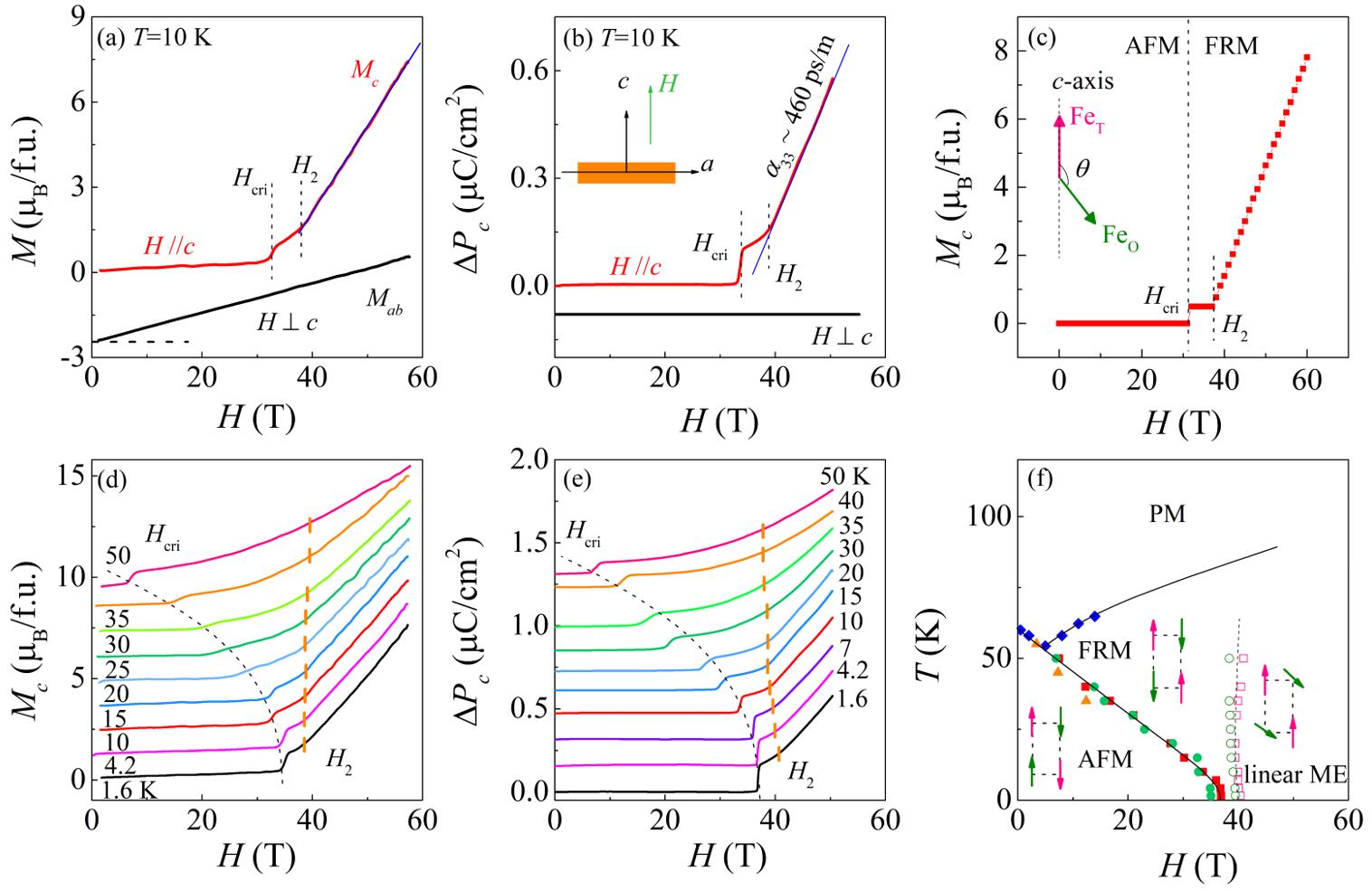
Figure1. (a) Out-of-plane (Mc) and in-plane magnetization (Mab) as a function of H measured at T = 10 K. (b)H dependence of ΔPc measured with H//c axis and H⊥c axis at T = 10 K. (c)The simulated M-H evolution based on the simplified spin model. (d) and (e) show Mc(H) and ΔPc(H) at various temperatures, respectively. For a better view, the curves have been shifted vertically.(f)The ME phase diagram of Fe2Mo3O8 constructed based on experimental and theoretical data.
Background
The linear magnetoelectric (ME) effect is an attractive phenomenon in condensed matters and provides indispensable technological functionalities. Although the studies on linear ME can be traced back to the 1960s, generally the intrinsic linear magnetoelectricity to date remains weak, with typicalαvalues of 1∼10 ps/m, which has been a long-term issue of ME activities.
What we discover?
The ME response of a polar magnet Fe2Mo3O8 is studied. Our experimental study finds a colossal linear ME effect in a broad H window, and the diagonal linear ME component in its ferromagnetic (FRM) phase is unprecedentedly large: α33∼480 ps/m at 20 K, orders of magnitude larger than reported values in literature. Our theoretical calculations suggest that the exchange striction tuned polarity and sign difference of magnetocrystalline anisotropy are essential in physics.
Why is this important?
The large ME coefficients (α) usually work in the proximate region near the transition point in ME system. In this sense, the operating window of potential ME devices based on these materials would be narrow. Such a trade-off between ME sensitivity and operating window makes it difficult to obtain an optimal system with superior performances in both sides (largeαand wideHwindow). In polar magnet Fe2Mo3O8, the colossal linear ME behavior can persist in a broad range of magnetic field (∼20 T) with diagonal component α33 reaching up to ∼480 ps/m.
Why did we need WHMFC?
we performed extensive measurements of magnetization and electric polarization over a large H range up to ∼58 T using a pulsed high magnetic field apparatus, which allows in-depth exploration of the linear ME of the FRM phase.
Who did the research?
Y. T. Chang1*, Y. K. Weng2*, Y. L. Xie3*, B. You1, J. F. Wang1, L. Li1, J.-M. Liu4, S. Dong5†, and C. L. Lu1‡
1Wuhan National High Magnetic Field Center & School of Physics, Huazhong University of Science and Technology, Wuhan 430074, China
2School of Science, Nanjing University of Posts and Telecommunications, Nanjing 210023, China
3Institute for Advanced Materials, Hubei Normal University, Huangshi 435001, China
4Laboratory of Solid State Microstructures, Nanjing University, Nanjing 210093, China
5Key Laboratory of Quantum Materials and Devices of Ministry of Education, School of Physics, Southeast University, Nanjing 211189, China
Acknowledgments
This work is supported by the National Nature Science Foundation of China (Grants No. 12174128, No. 11834002, No. 11704139, No. 92163210, and No. 12074135), Hubei Province Natural Science Foundation of China (Grants No. 2020CFA083 and No. 2021CFB574), the Interdisciplinary program of Wuhan National High Magnetic Field Center (WHMFC) at Huazhong University of Science and Technology (Grant No. WHMFC202205).
Link:https://journals.aps.org/prl/abstract/10.1103/PhysRevLett.131.136701
